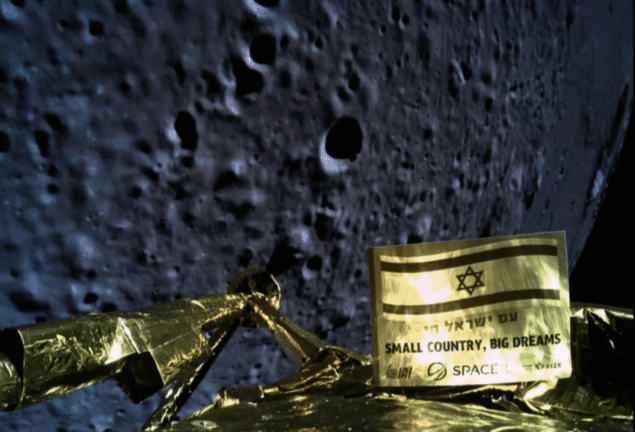
The first attempt by a private organization to land a spacecraft on the Moon has ended in failure after contact with the Beresheet lander was lost at around 19.30 GMT today just minutes before it was due to touch down. Had SpaceIL’s craft landed successfully, it would have made Israel the fourth nation to reach the Moon, after the US, the Soviet Union and China.
“If at first you don’t succeed, you try again,” said Israeli prime minister Benjamin Netanyahu from the control room, moments after the presumed crash was announced.
Beresheet was aiming to touch down within the Mare Serenitatis (The Sea of Serenity), which lies in the northern hemisphere of the Moon. Designed to inspire an Israeli “Apollo Effect”, the mission has been closely followed across the world and despite falling at the final hurdle its endeavours will surely have inspired many.
“Beresheet offers inspiration to all those who are fascinated by Space exploration but feel it is too hard or too expensive,” said mission scientist Oded Aharonson from the Weizmann Institute, Israel, ahead of the attempted landing. “In addition to learning something new about the Moon, it also offers a unique opportunity for educating young people in subjects of science and technology.”
Founded in 2011, SpaceIL is an Israeli not-for-profit organization that originally sought to win the Google Lunar XPRIZE – to build, launch and land an unmanned spacecraft on the Moon. Although Google’s competition ended on 31 March 2018 with no winners, the team pushed on, making up the required $100m budget with support from philanthropists and the Israel Space Agency.
A rocky start to a new era for space travel
Beresheet, meaning “Genesis” in Hebrew, launched on 22 February this year, hitching a ride on one of Elon Musk’s SpaceX Falcon 9 rockets. About the size of a standard washing machine, the Beresheet craft weighed 585 kg at launch. Initially, it was put into a high-Earth orbit where its furthest point from Earth (its apogee) was approximately six Earth radii. Once the team had a clear idea of the craft’s performance, they fired its rockets to send it into progressively larger orbits, swirling its way ever closer to the Moon.
Having spent some time sharing the same path the Moon takes around the Earth, Beresheet rockets were fired once more to enable it to be captured into the Moon’s orbit on 4 April. On 11 April, the craft entered the point of no return in its landing process at around 19.10 GMT. Shortly afterwards it temporarily lost contact with its telemetry system before experiencing an issue with its engine.

Not everything had been plain sailing for the SpaceIL team even before its fateful final minutes. During its journey to the Moon, the craft’s onboard computer system crashed several times and its navigation system was blinded by the intensity of light from the Sun. “You run into the unexpected so you always have to have a plan B or to have some reserves because you will use that eventually,” admitted Chris Russell, member of the SpaceIL Science team, ahead of the landing.
On a magnetic mission
Russell led the team at the University of California Los Angeles that designed the mission’s most significant scientific instrument: its magnetometer. Recent analysis of data collected during the Apollo era – mainly seismic and gravitational – suggest that the Moon is geologically stratified, with a heavy iron-rich core. Geophysicists believe that the Moon could have once generated its own magnetic field through the swirling movement of molten iron in the core. This geodynamo effect is the same mechanism behind the Earth’s magnetic field, which acts as a vital shield protecting life from lethal solar radiation.
Undoubtedly, however, Beresheet’s biggest legacy would always have been its status as the first private mission to land on our closest neighbour. Had it successfully landed on the Moon, the SpaceIL team would have been awarded a $1m Moonshot Award by the XPRIZE Foundation in recognition of its achievements.
“Don’t stop believing! We came close but unfortunately didn’t succeed with the landing process,” said the SpaceIL team on its Twitter account.
NASA has also issued a statement offering its congratulations for sending the first privately funded mission into lunar orbit. “Every attempt to reach new milestones holds opportunities for us to learn, adjust and progress. I have no doubt that Israel and SpaceIL will continue to explore and I look forward to celebrating their future achievements.”



